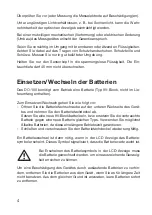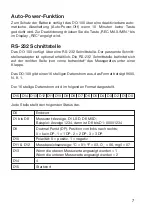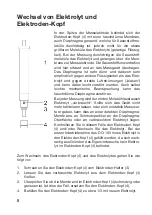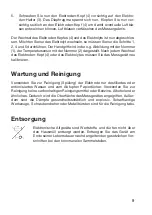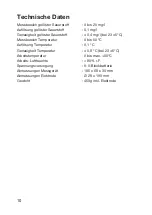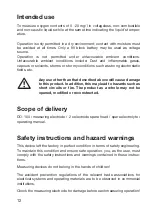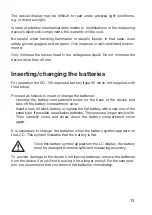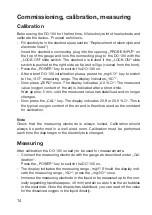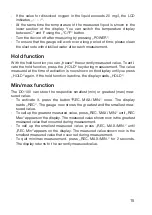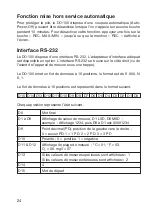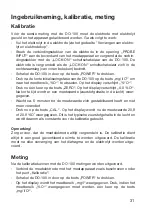
Replacement of electrolyte and
electrode head
The electrode head (4) with a wafer- thin membrane,
also referred to as diaphragm, which is permeable for
oxygen molecules but not for the slightly bigger elec-
trolyte molecules (gel- similar liquid), lies in the apex
of the measuring electrode. In the course of the mea-
suring, the oxygen molecules permeate the electro-
lyte and arrive at the measuring electrode via the
membrane. Here the oxygen- concentration is being
measured and transferred to the measurement devi-
ce. The diaphragm is very thin and therefore very sen-
sitive towards other liquids than the electrolyte and
towards direct air flows (“blowing”) which may easily
destroy the diaphragm. Even light mechanical strain
may destroy the wafer- thin diaphragm. During each
measuring, the molecular interchange “consumes”
electrolyte. If the device allows no calibration anymo-
re or if the measured values are unstable, the reason
might be a defect diaphragm- membrane, particles of
dirt at the diaphragm- surface or exhausted electro-
lyte. In this case please check the electrode head (4)
and/ or replace the electrolyte. For the first starting of
the DO- 100, electrolyte has to be filled in the electro-
de head (4) because there is no electrolyte in the elec-
trode head (4) ex factory by reason of the own- con-
sumption.
For the replacement of the electrode head (4) and the electrolyte please pro-
ceed as follows:
1. Unscrew the electrode head (4) from the electrode holder (3).
2. Let the used electrolyte flow out of the electrode head (4).
3. Check if the membrane at the electrode head (4) is dirty or ripped. If so,
replace the electrode head (4).
4. Fill the electrode head (4) up to one third with new electrolyte.
5. Now screw the electrode head (4) carefully on the electrode holder.
(
3). The diaphragm now tautens. Please knock carefully on the side of the
electrode head (4) in order to allow potential air bubbles to pass off. Air bub-
bles falsify the measurements results.
17


